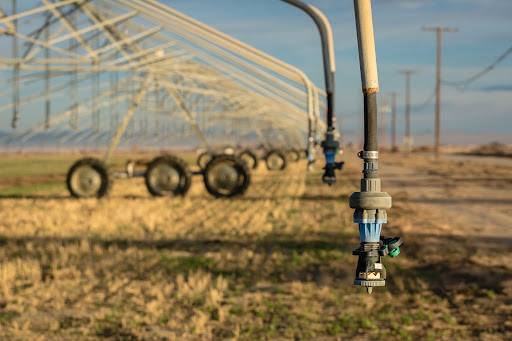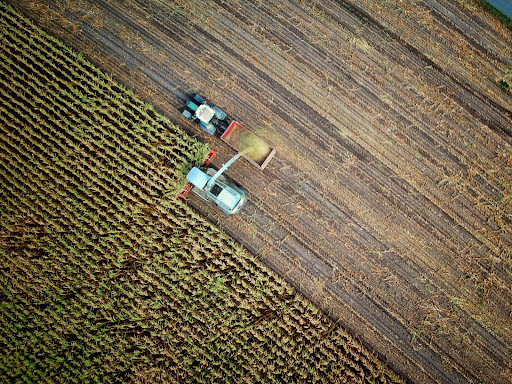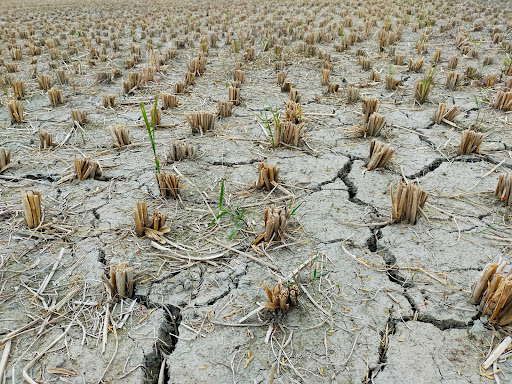Agriculture: The True Costs of Food Production and Sustainable Solutions
By TCI Intern Catherine Campbell
Agriculture Shapes Our Daily Lives
Agriculture is the cornerstone of modern civilization. The development of agriculture and consequent domestication of plants and animals allowed humans to develop a more sedentary lifestyle. Today agriculture, in combination with the evolution of technology, has enabled many of the luxuries and securities Americans enjoy in daily life. Fruits and vegetables are available year round, not just in season or in climatically appropriate locations. Meat and fish are readily available for multiple meals a day. There are typically choices in the type of dairy available at conventional coffee shops. Modern agriculture is the backbone to mass production systems such as the fibers industry, and consequently cloth originating from natural fibers. This is just a small reflection on the amenities that agriculture provides in daily life, however, those innovations have come at a cost to our planet.

Environmental Debt
Agriculture is one of the largest sources of human emissions , making it a large driver of climate change. The world’s food system contributes a quarter of human emissions (“Food..” 2022). This roughly breaks down to 13% of CO2, 44% of methane, and 81% of nitrous oxide (Mbow et al. 2019).This is especially significant when considering the relative warming power of the greenhouse gasses. Methane, despite having a shorter atmospheric lifetime, has over 20 times the warming power of CO2, with cattle farming and related decomposition contributing the most methane (Denchak 2019). Overall, emissions related to agriculture have significant warming potential which should not be dismissed.
However, it is also important to note that agriculture is also responsible for decreasing natural systems which serve to store carbon. Forests and soil are two primary places where carbon is stored within Earth’s natural systems. Deforestation removes vegetation which takes in CO2 during photosynthesis, lowering the capacity of this carbon sink to balance excess human emissions. Soil, being part of the geosphere, is a component of the largest carbon sink on Earth. Depending on the practices being used, agriculture can degrade soil at over 100 times the formation rate, consequently lowering the carbon storage capacities of soil (Mbow et al. 2019). In short, prevailing agricultural practices aren’t just producing emissions, they are reducing the Earth’s natural capacity to buffer human emissions.

Climate Change and the Future of Food Production
Food insecurity is already an enormous humanitarian issue. 2021 estimates place roughly 193 million people experiencing acute food insecurity at a “crisis level,” 40 million more than in 2020 (Reid 2022). In their 2019 report the Intergovernmental Panel on Climate Change (IPCC) estimates that as many as 183 million more people could experience food insecurity by 2050 (Mbow et al. 2019). Lower-income individuals, as well as individuals living in areas considered to be more vulnerable to climate change, are at a higher risk of experiencing this growing food insecurity (Mbow et al. 2019). This increase is attributed, in part, to the influence of climate change on crop yields. Weather extremes, including intense precipitation events, can destroy crops and diminish yields as a result (Hobert & Negra 2020). However, lack of water overtime and heat stress are also bad for crops. Heat stress can reduce food quality which is projected to increase food waste (Mbow et al. 2019). Furthermore, some plants require colder periods during their maturation to produce viable harvests, which may result in compromised yields in warming climates (Mbow et al. 2019). Additionally, high levels of CO2, which can increase plant productivity, are linked to decreases in the nutritional quality of plants (Mbow et al. 2019). Overall climate change could cause global yields to decline as much as 30% by the middle of the century (Hobert & Negra 2020). Of those impacted, individuals already experiencing some degree of food insecurity, roughly 2 billion individuals, will be most impacted (Hobert & Negra 2020).

TCI’s NEW Agriculture Learning Lab
The interesting thing about the intersection of agriculture and climate change is that agriculture can both be a solution to climate change and worsen climate change- all depending on how you approach it. New ways of farming, sometimes nodding to traditional land practices, show that we can successfully farm while protecting and regenerating the land on which we farm.
If you are interested in learning more about the challenges facing agriculture or potential sustainable solutions to these problems, check out TCI’s new agriculture learning lab! The supporting fact sheet explains the issues involving agriculture and outlines individual, family, and community solutions, while the virtual classroom provides a variety of resources that delve deeper into these problems and solutions.

The learning lab covers issues relating to equity, sustainability, and economics that relates to our current food production system. Information over the fiscal costs of climate change and unsustainable agricultural practices can be found by clicking on the tractor. For a breakdown of land use by state click the map. To learn more about what the problems involving agriculture could mean for the US click the radio. For a breakdown of the observed consequences of climate change and how they relate to agriculture click the potted plant and the ball (above the cat). The inequitable distribution of issues related to agriculture is highlighted in the page linked to the apple. To learn more about helping foster greater equity in food distribution click on the 40 Acre Coop poster. For information on a sustainable alternative to conventional agriculture click the TV, To find ways agriculture could be made into an environmentally beneficial system click the globe, the ipad, and the “World Bank” bulletin. For additional information on regenerative agriculture, click the “Kiss the Ground” bulletin. To test your knowledge on sustainable farming click the laptop. If you enjoy this learning lab, you can access all of TCI’s other student Learning Labs by clicking here! All additional resources referenced in this post are linked below.
Resources
Denchak, Melissa. “Greenhouse Effect 101.” NRDC, 16 July 2019
“Food Production & Waste.” The Climate Initiative, 27 July 2022
Mbow , C., C.Rosenzweig ,L.G. Barioni, T.G.Benton, M. Herrero, M. Krishnapillai, E.Liwenga, P.Pradhan ,M.G.Rivera-Ferre, T. Sapkota, F.N. Tubiello, Y. Xu, 2019: Food Security. In: Climate Change and Land: an IPCC special report on climate change, desertification, land degradation, sustainable land management, food security, and greenhouse gas fluxes in terrestrial ecosystems [P.R. Shukla, J. Skea, E. Calvo Buendia, V. Masson-Delmotte, H.-O. Pörtner, D.C. Roberts, P. Zhai, R. Slade, S. Connors, R. van Diemen, M. Ferrat, E. Haughey, S. Luz, S. Neogi, M. Pathak, J. Petzold, J. Portugal Pereira, P. Vyas, E. Huntley, K. Kissick, M. Belkacemi, J. Malley, (eds.)]. In press.
Reid, Kathryn. “10 World Hunger Facts You Need to Know.” World Vision, 6 July 2022
